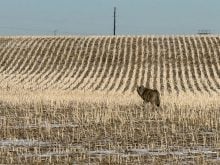Farm management editor D’Arce McMillan is part of a delegation accompanying federal agriculture minister Ralph Goodale on a trade mission to Japan and Indonesia. The trip is designed to investigate market opportunities for Canadian agricultural products. McMillan files these reports from Tokyo.
TOKYO, Japan – The Japanese believe when it comes to food, nothing should be left to chance.
The attitude was reinforced last year when a major outbreak of E. coli food poisoning affected 10,000 people and killed 11.
“If you do not have a product that is perceived as safe, you do not have a chance in the Japanese market,” said Ron Davidson, counsellor for food, fish and consumer products at the Canadian embassy here.
Read Also

Agritechnica Day 3: Hybrid drive for a combine, data standards keep up to tech change and tractors of the year
Agritechnica 2025 Day 3: Hybrid drive for a combine, data standards keep up to tech change and tractors of the year.
“The Japanese almost verge on paranoia as far as food safety goes.”
His words were backed up by an official of Japan’s largest grocery story chain, Daiei, who said Japanese consumers are suspicious of the safety of food not produced domestically.
Education helps ease concerns
To hammer home Canada’s reputation as a supplier of safe, quality food, the embassy here hosted the first Canadian food safety seminar outside of Canada.
“We want ‘made in Canada’ to be known not as just a label of origin, but as a badge of confidence and trust for our global clientele,” federal agriculture minister Ralph Goodale told a group of several dozen Japanese food importers last week.
The Japanese image of Canada as a pristine land of mountains and forests and lakes gives this country a psychological advantage.
But Cargill Ltd. president Kerry Hawkins told the seminar that Canada uses science to back up its image.
His company’s High River, Alta. facility is the pilot plant for the Canadian meat sector’s implementation of the Hazard Analysis Critical Control Points system.
It is designed to prevent outbreaks of food poisoning by analyzing the possibility of bacterial contamination during slaughter and processing and focussing extra attention on stages where contamination is more likely.














